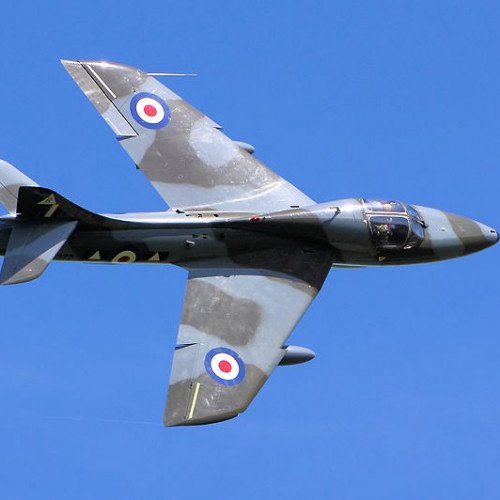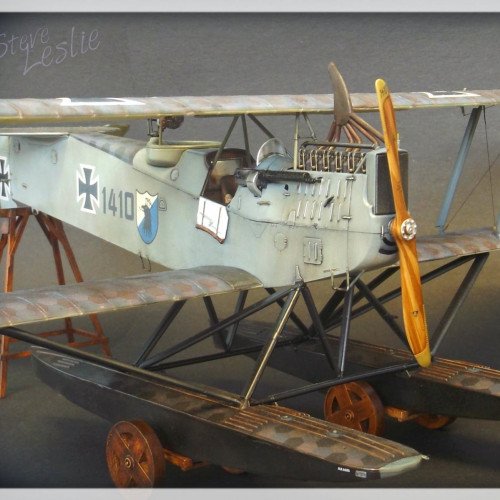Hawker Hunter vs Hansa-Brandenburg W.12

Hawker Hunter
The Hawker Hunter is a transonic British jet-powered fighter aircraft that was developed by Hawker Aircraft for the Royal Air Force (RAF) during the late 1940s and early 1950s. It was designed to take advantage of the newly developed Rolls-Royce Avon turbojet engine and the swept wing, and was the first jet-powered aircraft produced by Hawker to be procured by the RAF. On 7 September 1953, the modified first prototype broke the world air speed record for aircraft, achieving a speed of 727.63 mph (1,171.01 km/h; 632.29 kn). The single-seat Hunter was introduced to service in 1954 as a manoeuvrable day interceptor aircraft, quickly succeeding first-generation jet fighters in RAF service such as the Gloster Meteor and the de Havilland Venom. The all-weather/night fighter role was filled by the Gloster Javelin. Successively improved variants of the type were produced, adopting increasingly more capable engine models and expanding its fuel capacity amongst other modifications being implemented. Hunters were also used by two RAF display teams: the "Black Arrows", who on one occasion looped a record-breaking 22 Hunters in formation, and later the "Blue Diamonds", who flew 16 aircraft. The Hunter was also widely exported, serving with a total of 21 overseas air forces. During the 1960s, following the introduction of the supersonic English Electric Lightning in the interceptor role, the Hunter transitioned to being operated as a fighter-bomber and for aerial reconnaissance missions, using dedicated variants for these purposes. Two-seat variants remained in use for training and secondary roles with the RAF and the Royal Navy until the early 1990s. Sixty years after its original introduction it was still in active service, being operated by the Lebanese Air Force until 2014. The Hunter saw combat service in a range of conflicts with several operators, including the Suez Crisis, the Aden Emergency, the Sino-Indian War, the Indo-Pakistani War of 1965, the Indo-Pakistani War of 1971, the Rhodesian Bush War, the Second Congo War, the Six-Day War, the War of Attrition and the Yom Kippur War. Overall, 1,972 Hunters were manufactured by Hawker Aircraft and its successor, Hawker Siddeley, as well as being produced under licence overseas. In British service, the Hunter was replaced in its principal roles by the Lightning, the Hawker Siddeley Harrier and the McDonnell Douglas F-4 Phantom II.
Statistics for this Xoptio

Hansa-Brandenburg W.12
The Hansa-Brandenburg W.12 was a German biplane fighter floatplane of World War I. It was a development of Ernst Heinkel's previous KDW, adding a rear cockpit for an observer/gunner, and had an unusual inverted tailfin/rudder (which instead of standing up from the fuselage, hung below it) in order to give an uninterrupted field of fire. The W.12s (under the Naval designation C3MG) served on the Western Front, based at the Naval air bases at Ostend and Zeebrugge. The aircraft had some success, and one shot down the British airship C.27. In April 1918, a W.12 made an emergency landing in the neutral territory of the Netherlands, where it was interned and flight tested by the Dutch. In 1919 the government of the Netherlands bought a licence to build the aircraft. 35 W.12s were subsequently manufactured by the Van Berkel company of Rotterdam as the W-A, serving with the Dutch Naval Air Service until 1933.